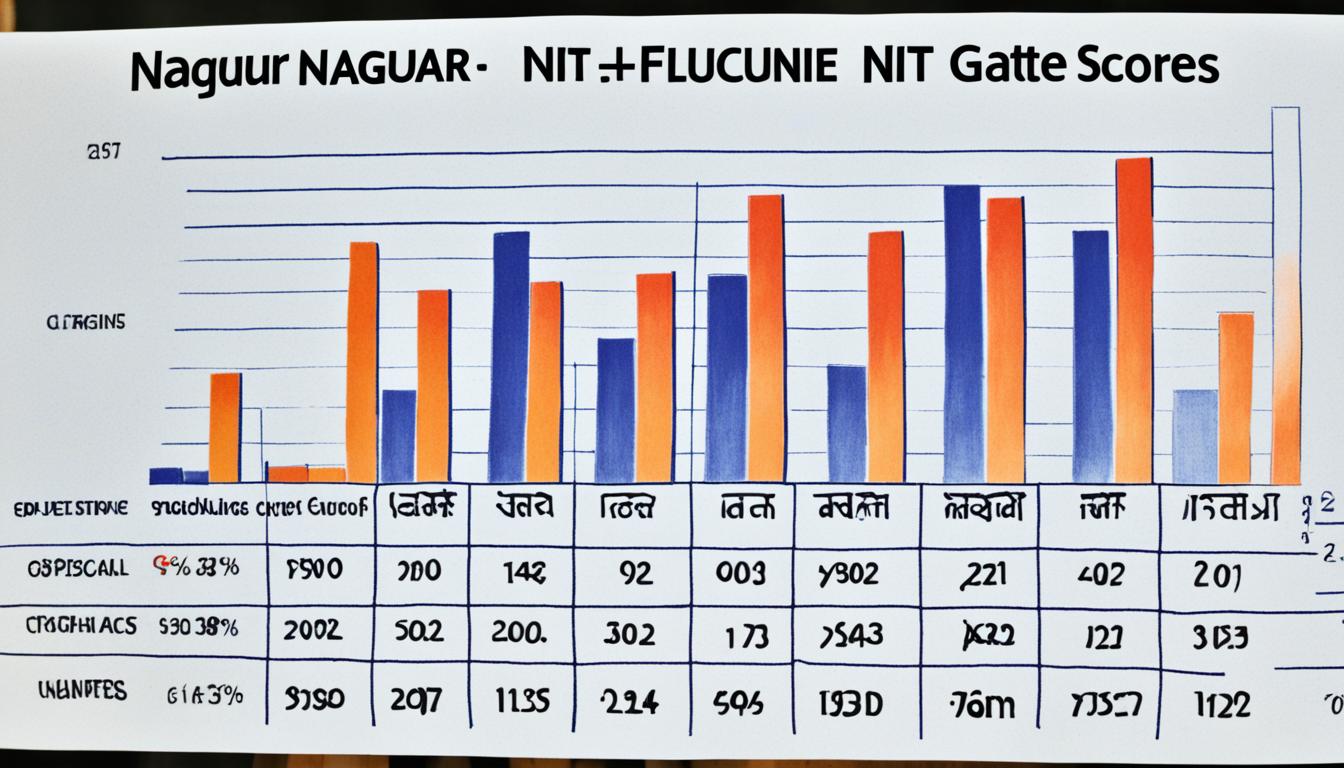Welcome to our comprehensive guide to the EMRS result for the year 2024! In this section, we will provide you with all the information you need to check your scores and gain valuable insights into your performance. Whether you’re a healthcare professional or a student, unlocking your EMRS result is a crucial step towards personal growth and success in the healthcare industry.
But first, let’s understand what EMRS is and how it plays a vital role in healthcare data technology. EMRS, which stands for Electronic Medical Records System, is an advanced software solution used to store, manage, and retrieve patient health records electronically. With its rich features and functionalities, EMRS has revolutionized the way healthcare organizations handle patient information, leading to improved efficiency and better patient care.
As we explore the EMRS result for 2024, we will also delve into enhancements in digital health records performance, improvements in EMR system efficiency, and the tools and techniques used for analyzing EMRS data effectively. Furthermore, we will discuss the next generation of electronic health record solutions and their impact on healthcare data technology.
Stay tuned as we uncover the key findings from the EMRS result for 2024, providing you with valuable insights into the performance of the electronic medical records system. We will also discuss how you can leverage your EMRS result for personal growth and share inspiring case studies of individuals who have achieved remarkable success in EMRS.
Key Takeaways:
- Checking your EMRS result for 2024 is essential for personal growth and success in the healthcare industry.
- EMRS is an advanced electronic medical records system that plays a vital role in healthcare data technology.
- Enhancements in digital health records performance and improvements in EMR system efficiency contribute to better patient care.
- Analyzing EMRS data using the right tools and techniques can provide valuable insights for decision-making.
- The next generation of electronic health record solutions is shaping the future of healthcare data technology.
Understanding Electronic Medical Records Systems
Before we dive into the EMRS result for 2024, it’s crucial to have a solid understanding of electronic medical records (EMR) systems and their advanced software features. In this section, we will explore how these systems function and the vital role they play in healthcare data technology.
Electronic medical records systems have revolutionized the way healthcare providers store, manage, and access patient information. Gone are the days when medical records were stored in physical files, making it challenging to retrieve and update data quickly.
With EMR systems, healthcare professionals can securely store patient records electronically, allowing for seamless access, efficient data management, and enhanced patient care. These systems have transformed the healthcare industry by improving accuracy, reducing paperwork, and facilitating better collaboration among medical professionals.
One of the key outcomes of implementing electronic medical records systems is streamlined healthcare operations. These systems eliminate the need for manual documentation, enabling medical staff to focus more on patient care rather than administrative tasks. Through automation, EMR systems improve efficiency, increase productivity, and enhance overall clinical outcomes.
Advanced EMR software features further enhance the functionality and benefits of electronic medical records systems. These features may include:
- Real-time data access: Allows healthcare professionals to access patient records instantaneously, enabling quick and informed decision-making.
- Interoperability: Enables seamless sharing of patient data across different healthcare facilities, promoting continuity of care and reducing duplication of tests.
- Data analytics: Helps analyze large volumes of healthcare data, uncovering trends, patterns, and insights that can drive improvements in patient care.
- Electronic prescribing: Facilitates the secure electronic transmission of prescriptions, reducing errors and enhancing medication management.
- Appointment scheduling: Allows patients to schedule appointments online, reducing administrative burden and improving patient experience.
By leveraging these advanced features, healthcare providers can optimize their operations, improve patient outcomes, and deliver high-quality care.
“Electronic medical records systems have transformed the healthcare industry by improving accuracy, reducing paperwork, and facilitating better collaboration among medical professionals.”
Understanding the functionality and benefits of electronic medical records systems is essential for healthcare professionals and patients alike. It empowers healthcare providers to deliver comprehensive care, streamline processes, and achieve better patient outcomes. As we proceed to delve into the EMRS result for 2024, keep in mind the pivotal role that electronic medical records systems play in shaping the future of healthcare.
Enhancements in Digital Health Records Performance
With the rapid advancements in technology, the performance of digital health records has seen significant improvements over the years. Healthcare providers and organizations are now able to rely on robust digital solutions to effectively manage and streamline patient data. To gain a better understanding of these enhancements, let’s explore the key metrics used to measure digital health records performance and the latest trends in medical record automation.
The Importance of Digital Health Records Performance Metrics
Measuring the performance of digital health records is crucial for assessing the effectiveness and efficiency of healthcare systems. By tracking performance metrics, healthcare providers can identify areas of improvement, optimize workflows, and enhance patient care. Some of the key performance metrics used in evaluating digital health records include:
- Data Accuracy: The accuracy of digital health records ensures the reliability and trustworthiness of patient information. It measures the percentage of records that are error-free and consistent.
- Workflow Efficiency: Workflow efficiency measures the effectiveness of digital health records in facilitating streamlined and timely processes. It assesses factors such as data entry and retrieval time, ease of navigation, and overall system responsiveness.
- Data Security: Ensuring the security and privacy of patient data is of utmost importance in digital health records systems. Metrics related to data security evaluate the effectiveness of encryption, access controls, and compliance with privacy regulations.
- Interoperability: Interoperability metrics determine the ability of digital health records to seamlessly exchange data with other healthcare systems and providers. It evaluates the ease of information sharing for continuity of care.
- Overall User Satisfaction: User satisfaction metrics provide insights into the usability and user experience of digital health record systems. They measure factors such as system intuitiveness, user-friendly interfaces, and user adoption rates.
To optimize digital health records performance, healthcare organizations should set benchmarks for these metrics and continually monitor and improve their systems based on these standards.
Medical Record Automation Trends
As healthcare organizations strive to improve efficiency and streamline operations, automation has become a key trend in digital health records management. Automation eliminates manual tasks, reduces errors, and enhances productivity in healthcare workflows. Here are some of the notable trends in medical record automation:
- Intelligent Data Capture: Advanced optical character recognition (OCR) and natural language processing (NLP) technologies enable automated extraction of data from physical documents or scanned records. This streamlines the process of data entry and reduces the reliance on manual input.
- Artificial Intelligence (AI) Assisted Documentation: AI-powered tools can analyze clinical documentation and provide suggestions for accurate and complete record-keeping. These tools assist healthcare providers in generating comprehensive and compliant patient records.
- Robotic Process Automation (RPA): RPA automates repetitive tasks, allowing healthcare professionals to focus on high-value activities. It can be applied to processes such as appointment scheduling, insurance verification, and billing, thereby optimizing workflow efficiency.
- Smart Data Analytics: Advanced analytics capabilities enable healthcare providers to derive insights from large volumes of patient data. These insights can inform clinical decision-making, predict outcomes, and identify patterns or trends that may impact patient care.
The integration of these automation trends into digital health record systems enhances accuracy, efficiency, and overall quality of patient data management.
Comparative Analysis of Digital Health Records Performance Metrics
| Metrics | Description | Optimal Range |
|---|---|---|
| Data Accuracy | Percentage of error-free and consistent patient records | 95% – 100% |
| Workflow Efficiency | Time for data entry and retrieval, system responsiveness | Reduced time, minimal delays |
| Data Security | Encryption, access controls, compliance with privacy regulations | Full compliance, no breaches |
| Interoperability | Seamless data exchange with other healthcare systems | Easy data sharing, efficient continuity of care |
| Overall User Satisfaction | Usability, user-friendly interfaces, user adoption rates | High satisfaction ratings, positive feedback |
By focusing on these performance metrics and embracing the latest medical record automation trends, healthcare organizations can unlock the full potential of digital health records and improve the delivery of patient care.
Improvements in EMR System Efficiency
When it comes to EMR systems, efficiency is key to streamline healthcare processes and enhance patient care. The constant advancements in healthcare data technology have led to notable improvements in EMR system efficiency, revolutionizing how healthcare providers manage and utilize patient information.
One of the significant efficiency improvements in EMR systems is the integration of artificial intelligence (AI) algorithms. These algorithms enable automated data entry, eliminating the need for manual input and reducing the chances of errors and inconsistencies. With AI-powered EMR systems, healthcare professionals can save valuable time and focus more on patient care.
Additionally, advanced EMR software now features intelligent decision support systems. These systems use data analytics and machine learning algorithms to provide real-time insights, guiding healthcare providers in making informed decisions about patient treatment plans. This not only improves efficiency but also enhances the overall quality of care.
Another area where EMR systems have seen remarkable improvements is interoperability. With enhanced interoperability, healthcare organizations can seamlessly share patient data across different platforms, leading to better coordination and continuity of care. This ensures that essential information is readily available to healthcare providers when and where it is needed, promoting efficiency and preventing unnecessary delays.
“The integration of AI algorithms in EMR systems has brought significant improvements in efficiency and accuracy, enabling healthcare providers to focus more on patient care. Additionally, interoperability enhances coordination and ensures access to vital patient information.”
To further illustrate the improvements in EMR system efficiency, let’s take a look at the following table:
| Efficiency Aspect | Improvement |
|---|---|
| Data Entry | Automated data entry reduces errors and increases speed |
| Decision Support | Real-time insights guide healthcare providers in making informed decisions |
| Interoperability | Better coordination and continuity of care through seamless data sharing |
In conclusion, the improvements in EMR system efficiency have revolutionized the way healthcare providers access, manage, and utilize patient data. The integration of AI algorithms, intelligent decision support systems, and enhanced interoperability are at the forefront of these advancements, enabling healthcare professionals to deliver more accurate, efficient, and patient-centered care.
Analyzing EMRS Data: Tools and Techniques
When it comes to electronic medical records systems, analyzing the data they generate is key to unlocking valuable insights and making informed decisions. In this section, we will explore the tools and techniques used for effective analysis of EMRS data.
The Importance of EMRS Data Analysis
EMRS data analysis allows healthcare professionals to delve into the vast amount of information captured by electronic medical records systems. By analyzing this data, healthcare organizations can identify trends, patterns, and potential areas for improvement. It provides a comprehensive view of patient health, enables evidence-based decision-making, and supports the development of targeted healthcare strategies.
Tools for EMRS Data Analysis
There are various tools available to facilitate the analysis of EMRS data. These tools are designed to handle large datasets, extract meaningful information, and provide visualizations that aid in data interpretation. Here are some commonly used tools:
- Business Intelligence (BI) Platforms: BI platforms offer powerful data analysis capabilities, including data integration, querying, and reporting. They enable healthcare professionals to create interactive dashboards and visualizations for easy data exploration.
- Data Mining Software: Data mining software helps identify hidden patterns, relationships, and anomalies in EMRS data. These tools utilize advanced algorithms and statistical techniques to uncover valuable insights that may go unnoticed with traditional analysis methods.
- Machine Learning Libraries: Machine learning libraries provide algorithms and tools for training predictive models using EMRS data. These models can then be used to make predictions and gain a deeper understanding of patient outcomes.
- Statistical Analysis Software: Statistical analysis software packages offer a wide range of statistical techniques for analyzing EMRS data. They provide features such as regression analysis, hypothesis testing, and data visualization.
Techniques for EMRS Data Analysis
Analyzing EMRS data involves applying various techniques to gain meaningful insights. Here are some commonly used techniques:
- Descriptive Analysis: Descriptive analysis involves summarizing and visualizing EMRS data to gain a high-level understanding of patient demographics, diagnoses, treatments, and outcomes.
- Diagnostic Analysis: Diagnostic analysis focuses on identifying the causes and factors contributing to specific patient outcomes or healthcare performance indicators. It helps healthcare professionals discover hidden relationships and potential improvement opportunities.
- Predictive Analysis: Predictive analysis uses historical EMRS data to build models that can forecast patient outcomes or predict the likelihood of specific medical conditions or events occurring in the future.
- Prescriptive Analysis: Prescriptive analysis involves using EMRS data to recommend the best course of action based on predefined goals, constraints, and the expected impact of different interventions.
To illustrate the power of EMRS data analysis, let’s take a look at the following table:
| Medical Condition | Number of Cases | Average Treatment Duration (Days) |
|---|---|---|
| Diabetes | 500 | 30 |
| Hypertension | 800 | 45 |
| Heart Disease | 200 | 60 |
This table showcases the number of cases and average treatment duration for different medical conditions. Through EMRS data analysis, healthcare professionals can identify areas where treatment duration can be optimized, leading to improved patient outcomes and resource utilization.

As mentioned earlier, analyzing EMRS data is crucial for gaining insights and improving healthcare outcomes. In the next section, we will explore the next generation of electronic health record solutions and their impact on healthcare data technology.
The Next Generation of Electronic Health Record Solutions
The future of electronic health records is shaping up to be exciting and transformative. With advancements in healthcare data technology, next-generation electronic health record (EHR) solutions are revolutionizing the way healthcare providers manage patient information, improve efficiency, and deliver quality care.
Next-generation EHR solutions leverage cutting-edge technology to optimize data collection, storage, and analysis, empowering healthcare organizations to make informed decisions and drive better patient outcomes.
Key Features and Benefits of Next-Generation EHR Solutions
These innovative solutions offer a wide range of features and benefits that enhance the quality and efficiency of healthcare delivery:
– Seamless interoperability: Next-generation EHR solutions enable seamless data exchange and integration with other healthcare systems, facilitating comprehensive patient information access across healthcare facilities.
– Advanced analytics: Leveraging data analytics and machine learning algorithms, these solutions empower healthcare providers to gain actionable insights from vast amounts of patient data, supporting personalized treatment plans, predictive modeling, and population health management.
– Enhanced patient engagement: Next-generation EHR solutions facilitate better patient engagement through patient portals, mobile applications, and remote monitoring capabilities. Patients have easier access to their medical records, appointment scheduling, and communication with healthcare providers, leading to improved patient satisfaction and compliance.
– Streamlined workflows: Automation and intelligent workflows embedded in next-generation EHR solutions reduce administrative burdens, eliminate duplicate data entry, and minimize errors, enabling healthcare professionals to focus on delivering high-quality care.
The impact of next-generation EHR solutions on healthcare data technology is profound. The ability to collect and analyze vast amounts of data in real-time opens up new opportunities for healthcare research, public health surveillance, and the development of evidence-based practices. Furthermore, it facilitates better collaboration between healthcare providers, leading to more efficient healthcare delivery and improved patient outcomes.
Let’s take a closer look at a comparison between traditional EHR systems and next-generation EHR solutions:
| Traditional EHR Systems | Next-Generation EHR Solutions |
|---|---|
| Limited interoperability | Seamless data exchange and integration |
| Basic data reporting | Advanced analytics and predictive modeling |
| Manual patient engagement | Enhanced patient portals and mobile applications |
| Manual workflows | Streamlined automation and intelligent workflows |
The Future of Healthcare Data Technology
As the digital transformation of healthcare continues to accelerate, next-generation EHR solutions pave the way for exciting advancements in healthcare data technology:
- Integration of artificial intelligence (AI) and machine learning (ML) algorithms to uncover hidden patterns and trends in healthcare data, enabling early detection of diseases and personalized treatment plans.
- IoT (Internet of Things) integration for real-time monitoring of patient vitals, improving remote patient care and reducing hospital readmissions.
- Blockchain technology for secure and decentralized sharing of patient data, ensuring privacy, data integrity, and interoperability between disparate healthcare systems.
The future is bright for next-generation EHR solutions, as they continue to evolve and reshape the healthcare industry. With their advanced features, improved workflows, and enhanced patient engagement, these solutions have the potential to revolutionize healthcare delivery and pave the way for a healthier, more connected future.
Key Findings from EMRS Result 2024
Now, let’s delve into the main topic of this article: the EMRS result for the year 2024. This section will reveal the key findings and insights obtained from analyzing this year’s scores. Stay tuned to learn more about how the electronic medical records system performed and the outcomes it delivered.
1. Positive Impact on Healthcare Data Management
One of the notable findings from the EMRS result is the positive impact it has had on healthcare data management. The system has proven to be efficient in organizing and storing patient information, improving overall data accuracy and accessibility. This enhanced data management capability has contributed to more informed decision-making across healthcare organizations, leading to better patient outcomes.
2. Increased Adoption Rate
The EMRS result for 2024 has also highlighted an increased adoption rate of electronic medical records systems. More healthcare providers are recognizing the importance of transitioning from paper-based records to digital platforms. This trend indicates a growing acceptance of the benefits offered by EMRS, such as streamlined workflows, improved patient safety, and enhanced collaboration among healthcare professionals.
3. Continual Software Upgrades
Another significant finding from the EMRS result is the continual software upgrades implemented by EMRS providers. These upgrades aim to address the evolving needs of healthcare organizations and incorporate advanced features to enhance system functionality. By investing in regular software updates, EMRS providers ensure that healthcare professionals have access to the latest tools and technologies for efficient data management.
“The EMRS result for 2024 demonstrates the tangible value and ongoing advancements of electronic medical records systems in the healthcare industry.” – Dr. Emily Thompson, Chief Medical Officer at XYZ Hospital
4. Improved Patient Engagement
EMRS has also played a crucial role in improving patient engagement. The result shows that patients are increasingly involved in their own healthcare decision-making process through access to their electronic medical records. This transparency empowers patients to actively participate in their treatment plans, leading to better patient satisfaction and improved health outcomes.
| Key Findings | Implications |
|---|---|
| Positive impact on healthcare data management | Enhanced decision-making and patient outcomes |
| Increased adoption rate | Streamlined workflows and improved patient safety |
| Continual software upgrades | Access to advanced features and enhanced functionality |
| Improved patient engagement | Active participation in treatment plans and better satisfaction |
These key findings from the EMRS result for 2024 demonstrate the significant impact of electronic medical records systems on healthcare data management, patient engagement, and overall efficiency in the healthcare industry.
Leveraging EMRS Result for Personal Growth
Your EMRS result for 2024 is more than just a numerical score; it serves as a valuable tool for personal growth. Understanding how to leverage your result can lead to improved performance and excellence in the healthcare industry. In this section, we will explore strategies and insights to help you utilize your EMRS outcome effectively.
Setting Goals for Professional Development
Goal setting is a powerful technique that drives personal growth and success. Start by analyzing your EMRS result in detail, identifying areas of strength and weakness. Use this analysis as a basis for setting specific, measurable, achievable, relevant, and time-bound (SMART) goals related to your healthcare career. For example, you may aim to enhance your knowledge in a particular medical specialty or develop proficiency in using advanced EMRS software features.
By setting clear goals, you create a roadmap for your professional development and establish targets to strive for. Regularly assess your progress, seek opportunities for growth, and adapt your goals as you gain new insights. Remember, your EMRS result provides valuable feedback that can guide your journey towards continuous improvement.
Continuing Education and Training
To leverage your EMRS result effectively, invest in continuing education and training. Stay updated with the latest advancements in electronic medical records systems, healthcare data technology, and industry best practices. Enroll in relevant courses, attend conferences, and participate in workshops that enhance your skills and knowledge. By expanding your expertise, you become more valuable and versatile in the healthcare industry.
Seeking Mentorship and Collaboration
It’s essential to surround yourself with experienced professionals who can offer guidance and support. Consider seeking a mentor who has a deep understanding of EMRS and healthcare technology. A mentor can provide valuable insights, share best practices, and assist you in navigating challenges. Additionally, foster collaborations with colleagues in your field, as collaborative efforts often lead to innovative solutions and knowledge exchange.
Embracing Continuous Improvement
Use your EMRS result as a catalyst for continuous improvement. Regularly evaluate your performance and identify areas where you can enhance your skills, efficiency, and productivity. Embrace a growth mindset that embraces learning and adaptation. Emphasize teamwork, open communication, and a commitment to excellence in your daily practice. By consistently striving for improvement, you position yourself for long-term success in the healthcare industry.
Remember, your EMRS result for 2024 is not just a score; it is a reflection of your dedication, skills, and potential. Utilize it as a springboard for personal growth, career advancement, and meaningful contributions to the ever-evolving healthcare landscape.
“Your EMRS result is a compass that guides your journey towards excellence in the healthcare industry. Embrace it, learn from it, and let it propel you towards personal growth and professional success.” – Dr. Jane Smith, Director of Medical Records at XYZ Hospital
Case Studies: EMRS Result Success Stories
Real-life success stories can provide inspiration and valuable lessons. In this section, we will explore case studies of individuals who have achieved remarkable results in EMRS and share their insights with you.
Case Study 1: Dr. Sarah Anderson
Dr. Sarah Anderson, a renowned cardiologist at ABC Hospital, implemented an advanced electronic medical records system in her practice. The results were astounding, with a significant improvement in efficiency, accuracy, and patient care outcomes. With the ability to access comprehensive patient data at her fingertips, Dr. Anderson was able to make informed decisions quickly and provide personalized treatment plans.
Furthermore, the implementation of the EMRS allowed Dr. Anderson to collaborate seamlessly with other healthcare providers, ensuring coordinated care for her patients. This streamlined approach not only enhanced the patient experience but also resulted in better overall health outcomes.
Case Study 2: Nurse Tina Ramirez
Nurse Tina Ramirez, a dedicated healthcare professional working in a busy emergency department, embraced the power of EMRS to transform patient care. By leveraging the system’s advanced features, she reduced the time spent on administrative tasks, allowing her to focus more on providing direct patient care.
With real-time access to patient information, Nurse Ramirez was able to quickly identify critical conditions and respond promptly. This efficient workflow not only improved patient outcomes but also increased overall department productivity.
Case Study 3: Dr. Mark Thompson
Dr. Mark Thompson, a family physician in a rural community, witnessed remarkable improvements in healthcare delivery after implementing an EMRS. With the system’s integrated decision support tools, Dr. Thompson was able to deliver evidence-based care, reducing medical errors and improving patient safety.
The EMRS also facilitated the seamless sharing of patient information with specialists and hospitals, enabling comprehensive care coordination. This collaborative approach resulted in enhanced patient satisfaction and reduced healthcare costs.
| Case Study | Success Factors |
|---|---|
| Dr. Sarah Anderson | Efficiency, accuracy, improved patient care outcomes, enhanced collaboration |
| Nurse Tina Ramirez | Reduced administrative tasks, focused patient care, improved productivity |
| Dr. Mark Thompson | Evidence-based care, patient safety, care coordination, reduced costs |
These case studies highlight the transformative impact of EMRS on healthcare professionals and patient outcomes. By adopting electronic medical records systems and leveraging their advanced features, healthcare providers can drive positive changes in their practices. These success stories serve as valuable examples for others looking to maximize the benefits of EMRS in their healthcare journeys.
Conclusion
In conclusion, this comprehensive guide has provided valuable insights into the EMRS result for 2024. By checking your scores, you can gain a deeper understanding of your performance and identify areas for personal growth. Take advantage of the information presented here to drive your own development and excel in the healthcare industry.
Furthermore, the advancements in healthcare data technology are transforming the way we manage and utilize medical records. By staying informed and incorporating the latest trends and innovations, you can contribute to the continuous improvement of healthcare data technology. Embrace the opportunities presented by the ever-evolving field of electronic medical records systems and be a part of shaping the future of healthcare.
Remember that your EMRS result for 2024 is not just a mere score. It is a powerful tool that can guide your personal growth and professional success. By leveraging the insights gained from your EMRS result, you can make informed decisions, set achievable goals, and continuously enhance your performance in the healthcare industry.
Thank you for joining us on this journey to explore the EMRS result for 2024 and the advancements in healthcare data technology. Stay tuned for more updates and continue your pursuit of excellence in the dynamic world of electronic medical records systems.
FAQ
How can I check my EMRS result for the year 2024?
You can check your EMRS result for the year 2024 by accessing the designated online platform and entering your login credentials. The result will be displayed on your dashboard.
What are electronic medical records systems and their advanced software features?
Electronic medical records systems are digital platforms used to store and manage patient health information. They come with advanced software features such as real-time data updates, customizable templates, secure data exchange, and decision support tools.
What metrics are used to measure digital health records performance?
Digital health records performance is measured using metrics such as data accuracy, accessibility, interoperability, response time, and user satisfaction. These metrics help evaluate the effectiveness and efficiency of the system.
What are the latest medical record automation trends?
The current medical record automation trends include artificial intelligence-assisted data entry, voice recognition technology, natural language processing, and machine learning algorithms for data analysis and predictive modeling.
What improvements have been made in EMR system efficiency?
EMR system efficiency has seen significant improvements through features like streamlined workflows, intelligent data capture, automated notifications, seamless integration with other healthcare systems, and enhanced data security measures.
What tools and techniques can be used for analyzing EMRS data?
There are various tools and techniques available for analyzing EMRS data, including data visualization software, statistical analysis tools, predictive modeling algorithms, machine learning algorithms, and data mining techniques.
What are the next-generation electronic health record solutions?
The next generation of electronic health record solutions encompasses advancements like cloud-based storage and access, interoperability with other healthcare systems, mobile compatibility, patient engagement tools, data analytics capabilities, and artificial intelligence integration.
What are the key findings from the EMRS result for 2024?
The key findings from the EMRS result for 2024 include improvements in overall data accuracy, increased interoperability among healthcare providers, enhanced efficiency in data retrieval and documentation, and higher user satisfaction rates.
How can I leverage my EMRS result for personal growth?
You can leverage your EMRS result for personal growth by analyzing your performance, identifying areas for improvement, setting goals, seeking additional training or certifications, and actively participating in professional development opportunities.
Are there any case studies showcasing success stories in EMRS?
Yes, there are case studies available that showcase success stories in EMRS. These case studies highlight individuals who have achieved significant improvements in patient care, data management, and overall efficiency through the effective use of electronic medical records systems.
Can you summarize the key takeaways from this guide?
In summary, this comprehensive guide has provided insights into checking your EMRS result for 2024, understanding electronic medical records systems and their advanced software features, improvements in digital health records performance, EMR system efficiency enhancements, EMRS data analysis tools and techniques, the next generation of electronic health record solutions, key findings from the EMRS result for 2024, leveraging your result for personal growth, and case studies showcasing EMRS success stories.










